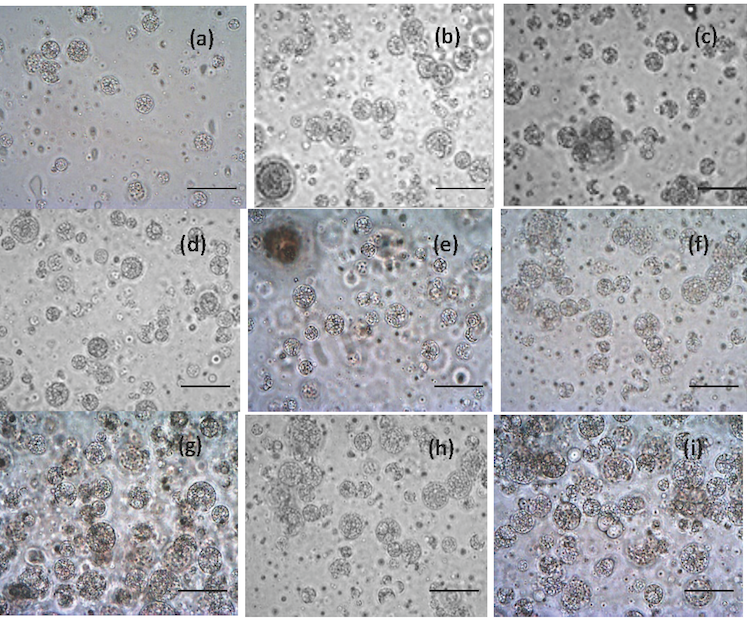 |
|
Multiple emulsions (ME) were formulated containing carboxymethylcellulose (CMC) and NaCl in the internal aqueous phase. Multiple emulsions were formulated with water and canola oil, as well as polyglycerol polyricinoleate (PGPR) and milk fat globule membrane (MFGM) as emulsifiers for the primary emulsion (W1/O) and the multiple emulsion (W1/O/W2) respectively. All MEs containing NaCl showed stability during storage time (28 days). The size (d3,2) of the ME was affected by the concentration of MFGM in the external aqueous phase as well as the pH. Emulsions formulated with higher concentrations of MFGM (5%, 6%, and 6.4%) had greater stability. The release of NaCl was observed to decrease at concentrations of 6% MFGM, and pH 5.0, 6.0 and 7.0. ME formulated at different concentrations of MFGM and different pH levels, exhibited increases in modulus G’ and G’’ as a function of the deformation, showing values of G’ higher than those of G’’ with up to 10% deformation. With respect to the values of the storage modulus of different multiple emulsions, ME pH 6.0 MF 6.4 showed the highest values (312.50 Pa) in the linear viscoelastic region, followed by ME pH 6.0 MF 5.0 (290.41 Pa).
Keywords: emulsion, encapsulation, rheology, release, milk fat globule membrane.
|
|
 |

